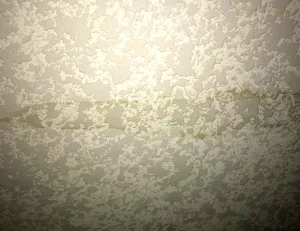Is the color sensitivity of a smart phone camera CCD components, and image reproduction of the display good enough to serve as a viable photometry and colorimetry matching device for common use? After all, Steve Jobs spent years at Apple obsessed with perfecting color reproduction and capture first for his PC line then later in the mobile domain.

Arguably on the display side, this superb work was eventually eclipsed by Samsung AMOLED displays, raising the bar for most mobile devices today. So why not leverage this high color sensitivity and display expertise built into millions of smartphones into (“yes there is an app for that”) to both capture and record specific color images for the purpose of reproducing them elsewhere?
The germ of the idea came while I was preparing for an Alpha Omega training event that looks at technologies that can be applied to the power of human thought to boost the creative process, a technique used in the past by successful thinkers and inventors like Edison and Ford. I was asked to come up with an idea to benefit others, and that could make money in order to become self sustaining.
I stumbled on this idea while packing for the event, noticing a water stain on my bedroom ceiling, a remnant from this past winter’s excessive rain in Portland, Oregon. Rather than paint the whole ceiling, why not match that faded paint with exactly the right color mix using images from my phone that get converted into a specific Pantone color? There are some in my family that think this is a simple exercise in procrastination but as I said to them, have a little faith…
Turning lemons into lemonade, can this ceiling color be captured and reproduced to cover this stain using a standard smartphone?As the fortunes of the universe would have it, I happen to be on a first name basis with one of the foremost display industry experts on this continent, (perhaps on the planet), Dr. Ray Soneira of DisplayMate Labs. Applying a core principle of my creativity training: “Do what you can with what you have today,” I wrote an e-mail to the good Dr. Ray.
Below is the letter and his insightful response. published here with an appeal to the expertise of this august body of readers to help bring the idea into life. Or in the words of John Boggs, CEO of LifeSolutions that Work LLC. “Transmute a living entity now existing in thought form, into its substantial equivalent in 3D time and space.”
Ray,
In your mind is it possible to create an app that can take a picture of a wall or ceiling in order to capture the exact color?Then translate that into an exact Pantone that can then be given to a paint department – say Home Depot or one of the national brands like Sherwin Williams to duplicate?
The use or application would be for patch jobs in homes and other places (cars is another example) where you need to match an aging or fading color without the patch being “too noticeable.”
Beyond the level of sensitivity in the CCD chip, in an iPhone or recent Samsung model, what else would be required hardware and software wise?
Finally do you I think this is a good idea and/or have any interest in working with me to bring such a product to market?
Just checking…
Ray replied:
Hi Steve,
Interesting idea…
Here are some technical issues to consider:
1. The color you see and the camera captures depends rather strongly on the color of the illuminating ambient light. For example, most indoor lighting is a yellowish 2700K and daylight is 6500K. In most cases light reflected by other colored objects in the room will also affect the color of the ambient light that falls on the area.
2. So you will need 2 photos taken one right after the other: (1) a photo of a pure white piece of paper over the same wall or ceiling section, and (2) a photo of the reference area to be photographed. You can also sell a reference white sheet for doing that for higher accuracy.
3. The App will have to turn off Auto White Balance and other photo image processing. Use a Raw photo mode if available. The camera will need to use the same flash setting for both photos because brightness/darkness/reflectance of the paint is an important parameter in addition to its color/chromaticity.
4. The color calibration of different cameras vary, so you will need settings for popular smartphones like the various iPhones and Galaxy phones.
5. … a fantastic (yet undisclosed) business idea… (OMG!)
6. If the above ideas are useful cut me into the profits… I can act as a photometry and colorimetry advisor but can’t do the App itself.
Ray
Wow!
This is a jackpot response with golden nugget ideas to help guide the next phase of development plus an amazing offer of a valuable resource for equity by a leading display industry expert. It simply doesn’t get any better.
This response moves me to the next phase of gestation in the ultimate birth of an idea into a tangible product with an unlimited upside in value, and I’m one step closer now to wealth creation. To me the exercise helps validate some of the universal principles of creative transcendence at work.
Then again, perhaps from another view, what I may be validating is the idea that there is no limit to the amount of time that can be added to procrastination by looking to invent a new solution rather than simply do the work. (“…yes honey I’m still working on that.”) Ha! you choose! — Stephen Sechrist
New Vivid Color Technology Exceeds Quantum Dot and OLED Color Gamut

